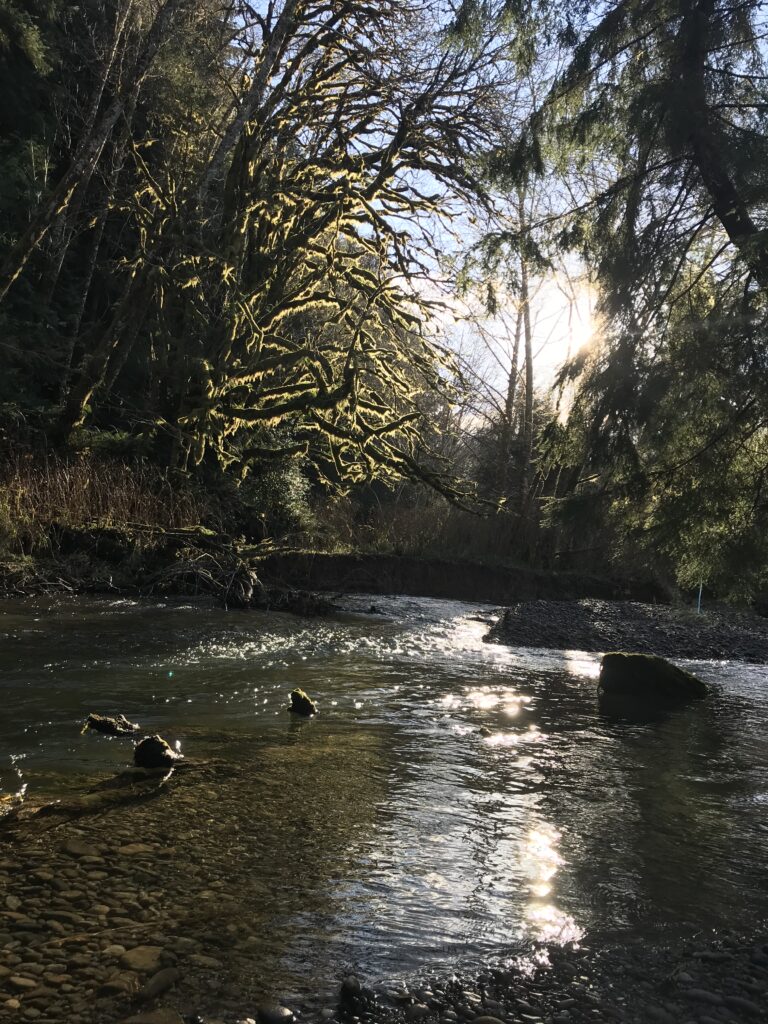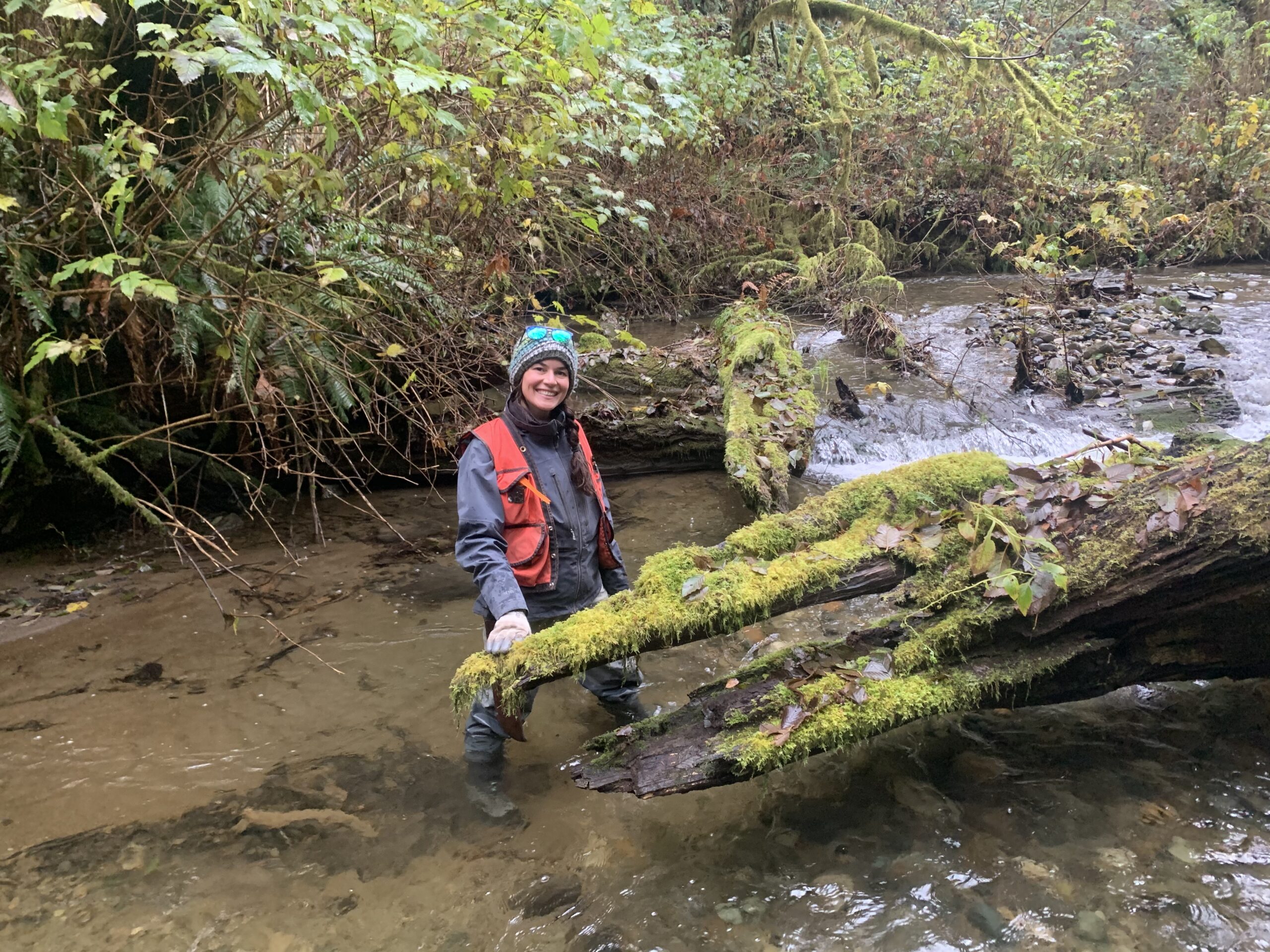LEKT Natural Resources Department have been conducting annual Redd surveys on rivers and streams within the Tribe’s Usual and Accustomed Fishing areas since the early 1990’s. These areas contain over 400 miles of potential salmon spawning and rearing habitat, but it is not possible to sample every reach. The survey effort that begins in November and continues through the beginning of January is focused on habitat and prioritizes reaches that can characterized by specific size, gradient and valley confinement conducive to spawning.
The geomorphologically selected sample includes 24 streams, divided into three regions:
Western – Little Hoko, Leyh, Bridge, Cadillac, Clallam, Green, Needham, Salmonberry, Traylor, Reed
Central – Jim, Gibson, Sampson, Deep Creek, East Fork, West & East Twin, Sadie tributaries, Couch, Suzie
East – Nelson, Whiskey, Falls, Salt, Colville
LEKT Natural Resources also monitor the Elwha River for Redds, using SONAR and surveys where possible. Surveys are also conducted on Elwha river tributaries: Little River, Indian Creek, Griff Creek, Madison Creek, Boulder Creek, Cat Creek, Hughes Creek and Hurricane Creek. Since dam removal, Coho populations continue to occupy more of their historic spawning range over time and the extent of surveys has reflected these changes.
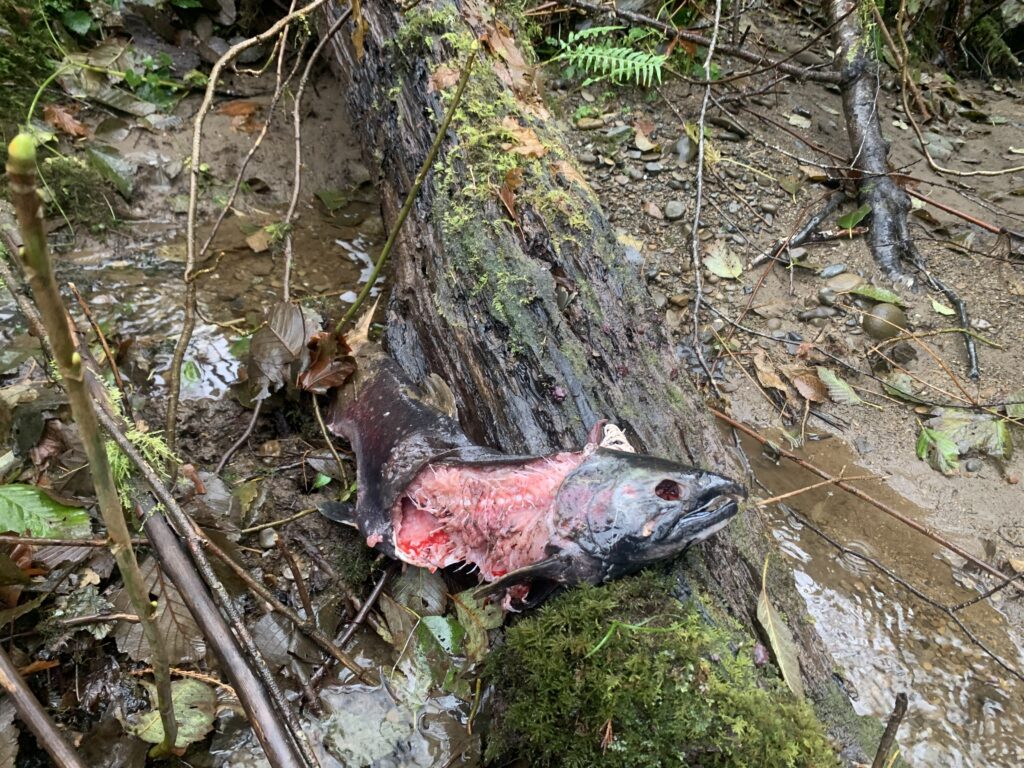
Conducting these extensive surveys is both physically demanding and time consuming through the season. It may take an entire day to complete a survey on one or two reaches in close proximity, due to access or challenging terrain. Access can constrain sampling from year to year; LEKT managers and staff have maintained relationships with landowners for years.
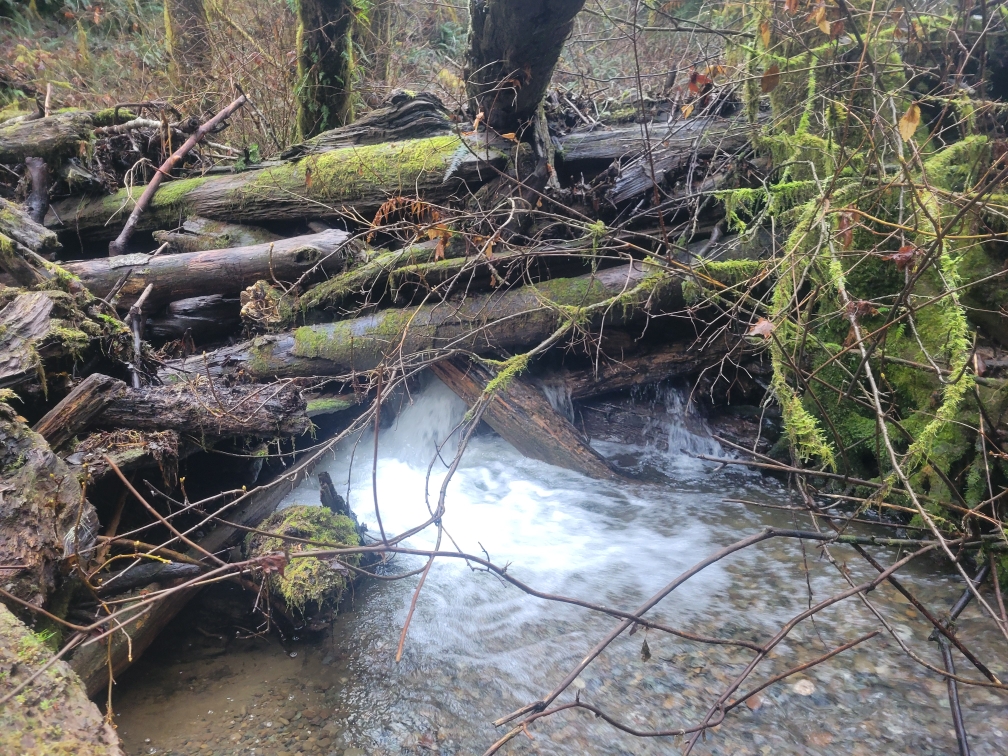
Technicians and biologists will work their way upstream on a given section of a river or creek. Along the way, they look for and identify nests dug out in the gravel (redds), marking them with flagging on adjacent bank vegetation, so that the next survey a week or so later doesn’t double count a redd. Adult numbers are also estimated by observing them in deep pools, where they may be resting or ‘holding’ as they migrate further upstream.
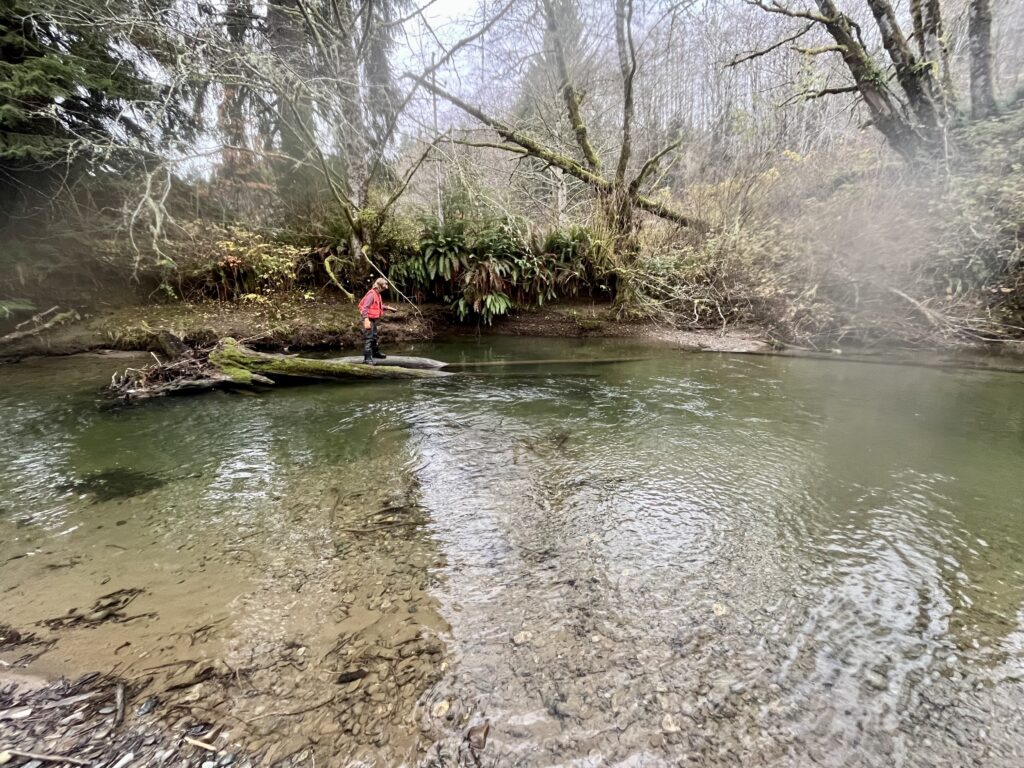
Experienced fisheries staff describe identifying Redds as a sort of art, taking several seasons to develop an eye for detecting the most obscure nests or distinguishing an established Redd from a test dig or hydrologic scour. Polarized sunglasses can be helpful, even on cloudy days.
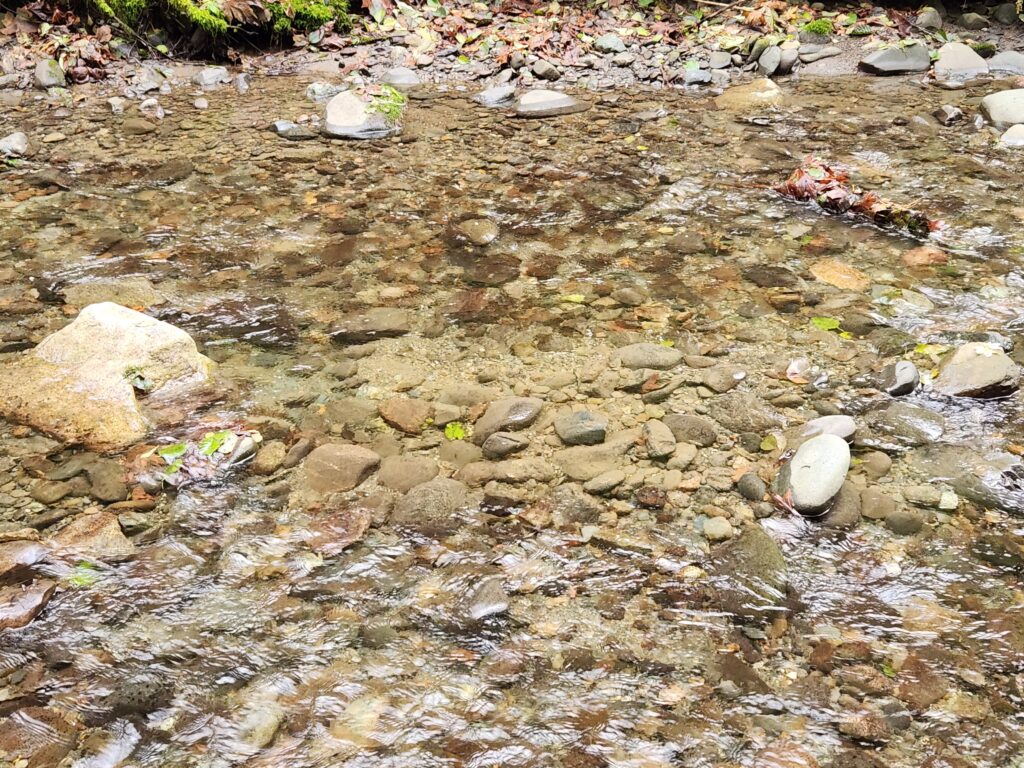
Distinct species dig unique nests. Coho redds are very organized, characterized by a conical bowl shape and single mound that a female will build downstream of it. Chum make comparatively messy redds, where often multiple females have contributed digging effort as well as eggs to one large redd. Chum redds are also noted as indexes of populations, but these are considered supplementary to the Coho data.
Although Coho numbers statewide were lower than last year, it is important to keep in mind that these wild salmon populations are cyclic. The numbers this year are consistent with that. And it is also notable from these surveys that the observed habitat across these areas is healthy; restoration efforts that have been conducted for years on several of these creeks and Elwha tributaries is paying off. Degraded or blocked habitat is well understood to be an important limiting factor for salmon spawning success. Thus, although fewer adults have returned, their offspring will benefit from improved and expanded habitat as they grow and hopefully one day come back to spawn themselves.
